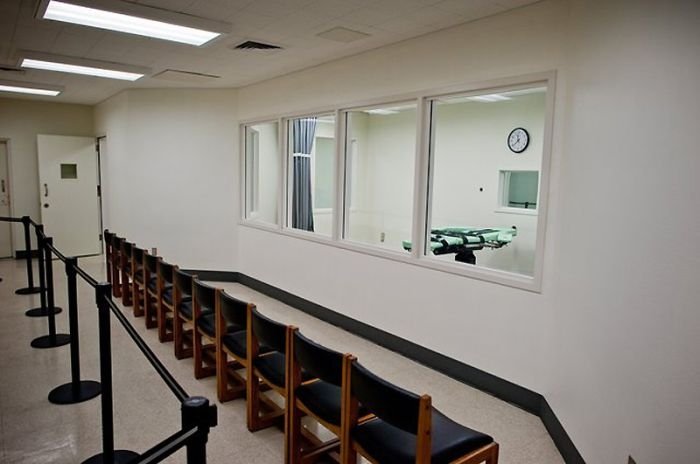|
|
Lethal Injection Chamber, San Quentin State Prison, California, United States
|
Men condemned to death (with some exceptions) must be held at San Quentin, while condemned women are held at Central California Women's Facility. As of December 2008, San Quentin held 637 male inmates in its Condemned unit, or "death row." As of 2001, San Quentin's death row was described as "the largest in the Western Hemisphere"; as of 2005, it was called "the most populous execution antechamber in the United States." The states of Florida and Texas had fewer death row inmates in 2008 (397 and 373 respectively) than San Quentin.
The death row at San Quentin is divided into three sections: the quiet "North-Segregation" or "North-Seg," built in 1934, for prisoners who "don't cause trouble"; the "East Block," a "crumbling, leaky maze of a place built in 1927"; and the "Adjustment Center" for the "worst of the worst." Although $395 million was allocated in the 2008-2009 state budget for new death row facilities at San Quentin, in December 2008 two legislators introduced bills to eliminate the funding.
All executions in California must occur at San Quentin. The methods for execution at San Quentin have changed over time. Between 1893 and 1937, 215 people were executed at San Quentin by hanging, after which 196 prisoners died in the gas chamber. In 1995, the use of gas for execution was ruled "cruel and unusual punishment," which led to executions inside the gas chamber by lethal injection. Between 1996 and 2006, 11 people were executed at San Quentin by lethal injection.
|
|









